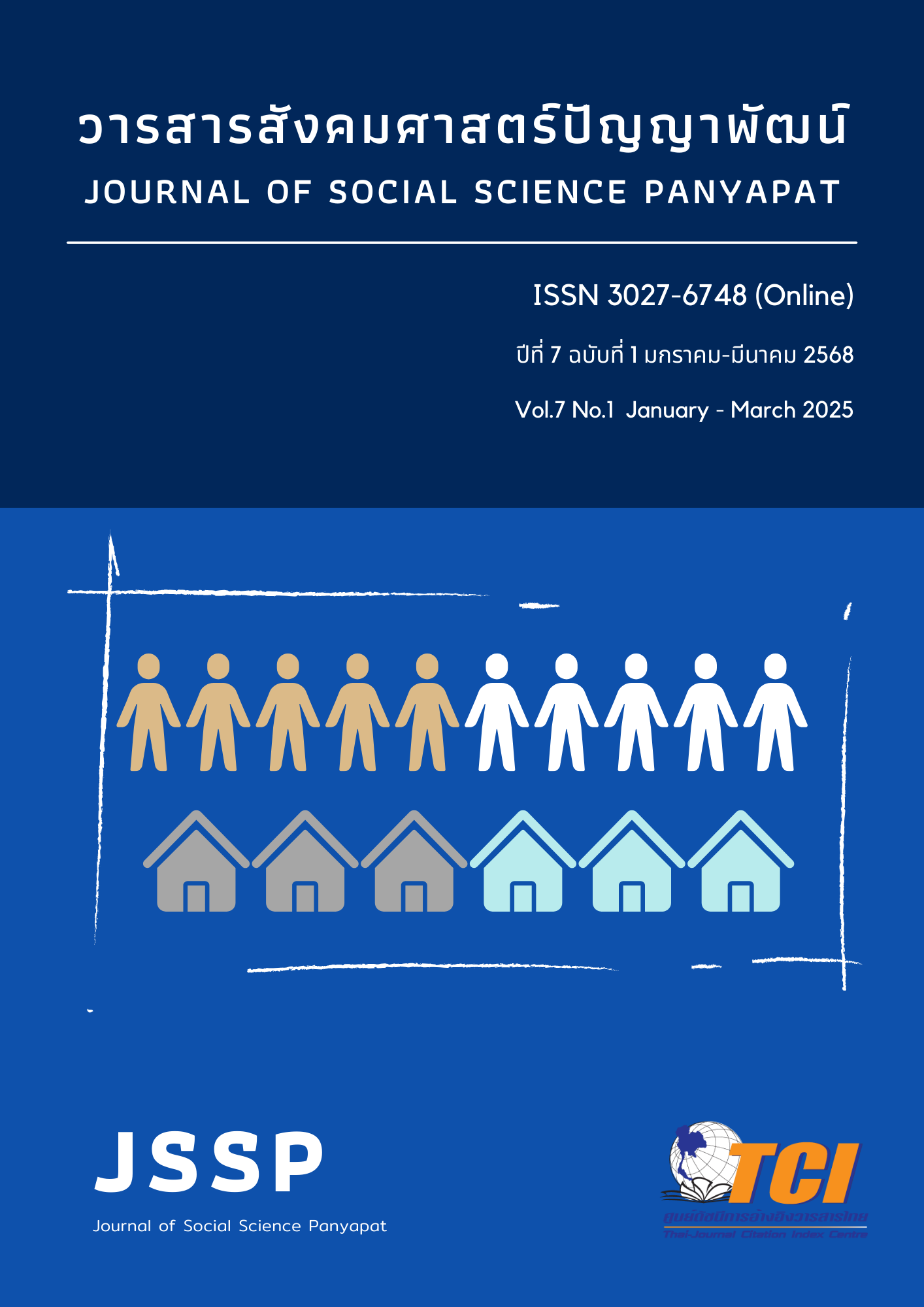Organizational Commitment of Judicial Officers and Personnel in the Supreme Court
Keywords:
Organizational Commitment, Organizational Climate, Judicial Officials and Personnel in the Supreme CourtAbstract
This research article aims: (1) to study the level of organizational commitment of judicial officers and personnel in the Supreme Court, (2) to compare the organizational commitment of judicial officers and personnel in the Supreme Court based on personal factors; and (3) to study the relationship between organizational climate and organizational commitment of judicial officers and personnel in the Supreme Court. This research is a quantitative study. The population in this study consists of judicial officers and personnel working in the Supreme Court. The sample size was calculated using Taro Yamane’s formula, and a stratified random sampling method was employed, resulting in a total of 200 participants. The data collection instrument used in this study was a questionnaire. The statistical methods used for data analysis included frequency, percentage, mean, standard deviation, t-test, one-way ANOVA, and Pearson’s correlation coefficient, with a statistical significance level of .05. The research findings revealed that: 1) The level of organizational commitment of judicial officers and personnel in the Supreme Court is at a high level. 2) Personal factors, including gender, age, marital status, level of education, monthly income, job position, and department, do not show significant differences in organizational commitment. However, the length of service significantly affects organizational commitment, with a statistical significance at the .05 level. 3) The organizational climate has a moderate relationship with the organizational commitment of judicial officers and personnel in the Supreme Court, with a statistical significance at the .05 level.
References
จักรพงษ์ ชมวะนา และ ณฐา เมธาบุษยาธร. (2567). ปัจจัยที่มีความสัมพันธ์กับความผูกพันองค์กรของบุคลากรโรงพยาบาลส่งเสริมสุขภาพตําบลจังหวัดสระบุรี. วารสารนวัตกรรมสุขภาพและความปลอดภัย. 1(3), 1-15.
พิทยุตม์ แสงประเสริฐ. (2563). ความผูกพันต่อองค์การของข้าราชการกรมที่ดิน ในหน่วยงานสังกัดราชการบริหารส่วนกลาง. (รัฐประศาสนศาสตรมหาบัณฑิต, จุฬาลงกรณ์มหาวิทยาลัย).
พีระ แก้วสะอาด. (2564). อิทธิพลของบรรยากาศองค์การที่ส่งผลต่อความผูกพันต่อองค์การของพนักงาน บมจ. ธนาคารกรุงไทย สำนักงานใหญ่. (บริหารธุรกิจมหาบัณฑิต, มหาวิทยาลัยศรีนครินทรวิโรฒ).
วราภรณ์ สุริยา. (2565). ความสุขในที่ทำงานและบรรยากาศองค์การที่มีความสัมพันธ์กับความผูกพันต่อองค์การของพนักงานการยาสูบแห่งประเทศไทย สำนักงานใหญ่. (บริหารธุรกิจมหาบัณฑิต, มหาวิทยาลัยศรีนครินทรวิโรฒ).
ส่วนช่วยอำนวยการ สำนักอำนวยการประจำศาลฎีกา. (2567). ข้อมูลสำนักอำนวยการประจำศาลฎีกา. สืบค้นจาก http://www.supremecourt.or.th/.
อิสรีย์รัก ยศกรกุลวงค์. (2564). ความผูกพันต่อองค์กรของบุคลากรสถาบันการบินพลเรือน. (ศิลปศาสตรมหาบัณฑิต, มหาวิทยาลัยเกษตรศาสตร์).
Allen, N. J., & Mayer, J. P. (1990). The measurement and antecedents of affective, continuance, and normative commitment to the organization. Journal of Occupational Psychology, 63(1), 1-18.
Litwin, G., & Stringer, R. (1968). Motivation and Organizational Climate. Massachusetts: Harvard University Press.
McGregor, D. (1960). The human side of enterprise. New York: McGraw-Hill.
Owen, R. G. (1991). Organizational behavior in education. Englewood Cliffs, NJ: Prentice Hall.
Yamane, T. (1970). Statistics: An Introductory Analysis. (2nd Edition). New York: Harper and Row.
Downloads
Published
How to Cite
Issue
Section
License
Copyright (c) 2025 Journal of Social Science Panyapat

This work is licensed under a Creative Commons Attribution-NonCommercial-NoDerivatives 4.0 International License.


